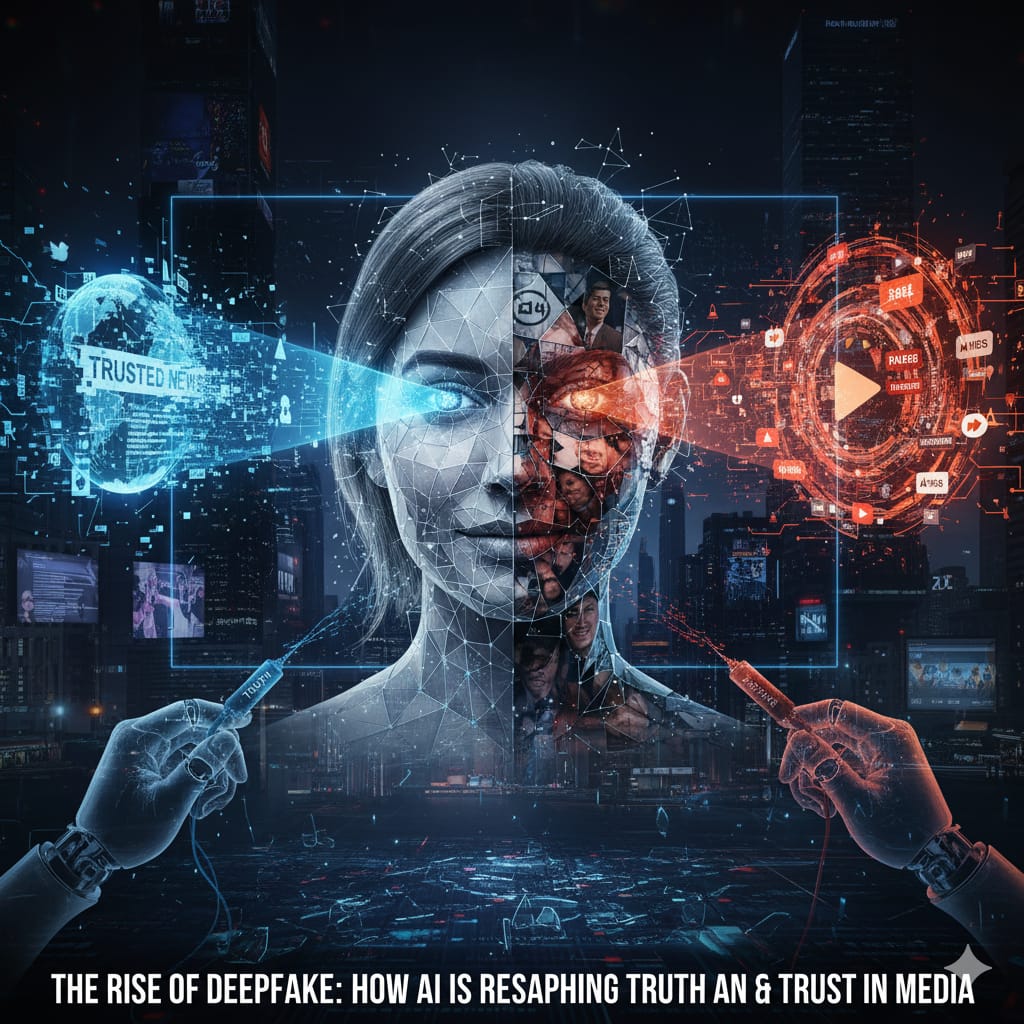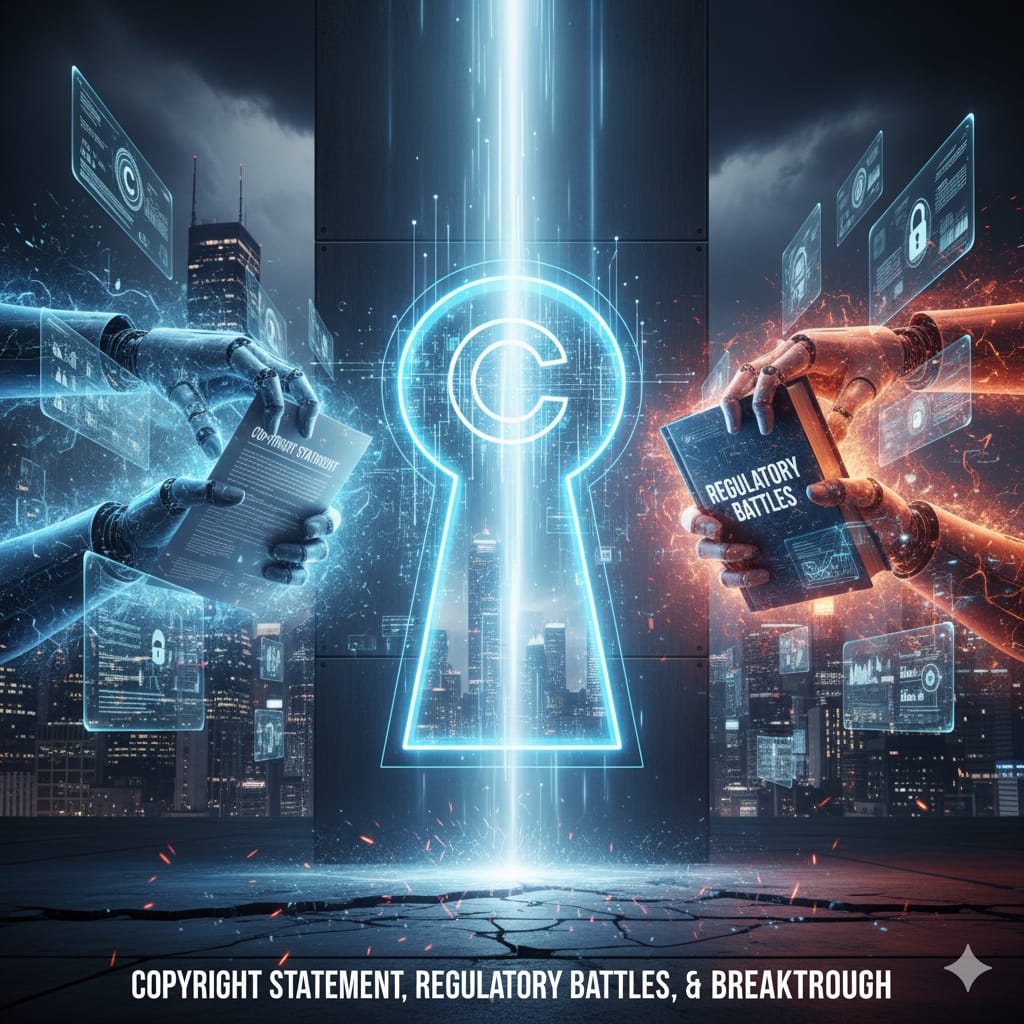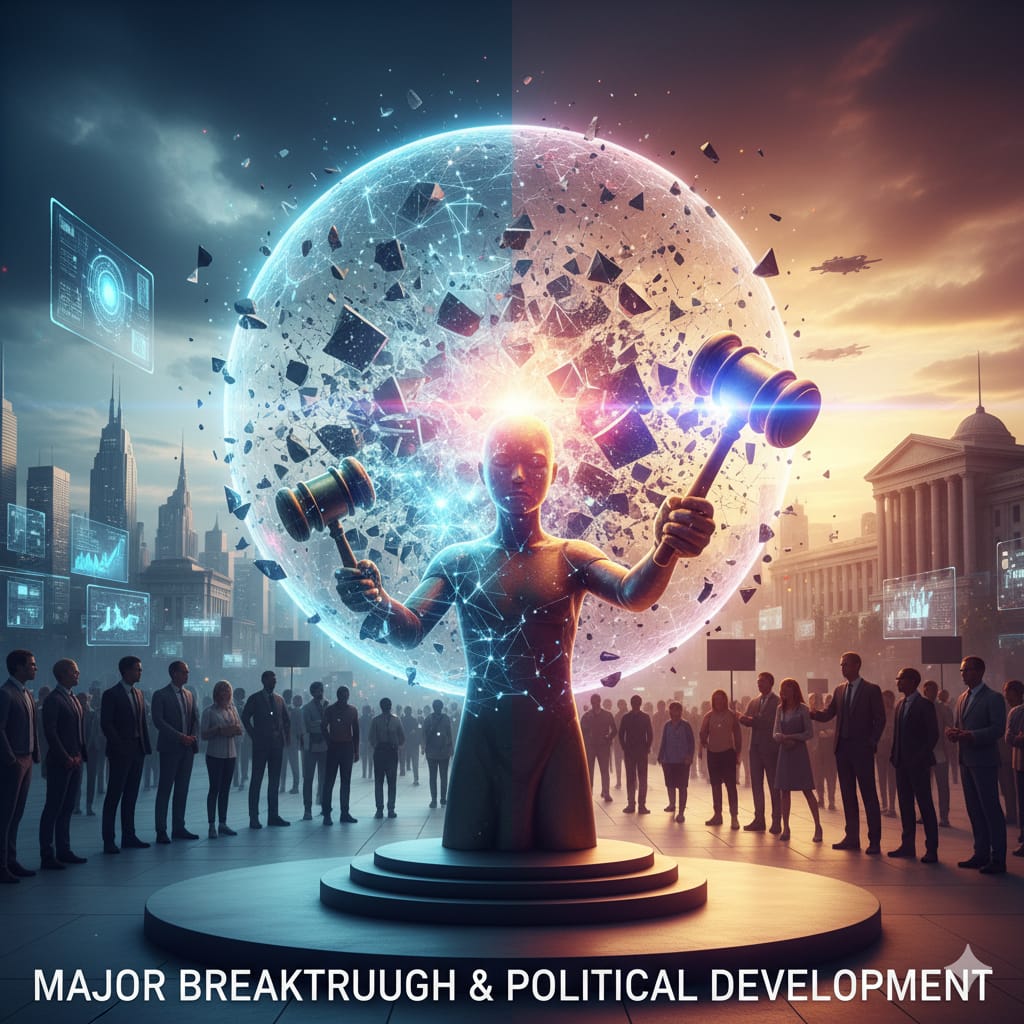Introduction: The Deepfake Dilemma in Digital Media
Deepfake technology, a portmanteau of "deep learning" and "fake," represents one of the most significant challenges to media authenticity in the digital age. These AI-generated manipulations create convincing synthetic media where individuals appear to say or do things they never actually said or did :cite[3]. The technology has evolved from simple editing software to sophisticated algorithms leveraging thousands of datasets and deep neural networks, making it increasingly difficult to distinguish between real and fabricated content :cite[4]. As we navigate this new landscape, deepfakes are reshaping our relationship with media, challenging fundamental assumptions about "seeing is believing," and forcing a reexamination of how we establish truth in digital content. The viral deepfake of Donald Trump that spread misinformation during the 2020 election cycle serves as a potent example of how this technology can be weaponized to influence public perception and undermine democratic processes.
The Technology Behind Deepfakes: How AI Creates Synthetic Reality
Deepfake technology leverages sophisticated machine learning algorithms, particularly **deep neural networks**, to synthesize realistic human-like content. These models analyze vast amounts of data to understand facial expressions, voice patterns, and movements, allowing them to create highly convincing media that can be difficult to distinguish from real footage :cite[2]. The most common method used in deepfake creation is **Generative Adversarial Networks (GANs)**, which consist of two neural networks—the generator that creates the fake content and the discriminator that evaluates its authenticity. This continuous learning process enhances the quality of deepfake content over time, making detection increasingly difficult :cite[2].
The evolution of this technology has been rapid and concerning. From relatively primitive beginnings in 2017 when the term was first coined on Reddit, deepfake technology has advanced to the point where creating convincing synthetic media requires minimal technical expertise :cite[4]. The democratization of deepfake apps and the lack of proactive approaches for misuse have skyrocketed deepfake videos, with the population of deepfakes on the internet increasing by **968%** from 2018 to 2020 :cite[4]. Today, approximately 10,000 readily available tools make creating sophisticated deepfakes accessible to virtually anyone with malicious intent, regardless of their technical background :cite[4].
Erosion of Media Trust: The Foundation Under Attack
Trust in media is crucial for a functioning society and democracy, ensuring that individuals are informed and can engage in civic discourse. Unfortunately, deepfakes are accelerating the erosion of this trust at an alarming rate. According to a perceived objectivity of the mass media 2023 report, only **7%** of U.S. adults have a "great deal" of trust in mass media to report the news fully, accurately, and fairly. Even more concerning, **39%** of respondents said they did not trust the media at all—a new time high since 2016 :cite[1]. This decline in trust has severe repercussions for democratic participation and other societal needs, as citizens become increasingly skeptical of all information sources.
Deepfakes contribute to this erosion of trust in multiple ways. They enable the rapid spread of **misinformation**, especially in media, through the precise manipulation of video and audio content :cite[1]. This ability makes verifying content's authenticity extremely difficult, particularly when it goes viral before fact-checkers can respond. Additionally, as viewers, listeners, and readers increasingly question the authenticity of the information they receive due to the growing sophistication of deepfake software, they may disengage from civic activities altogether, creating a dangerous vacuum where misinformation can thrive unchecked :cite[1].
Political Manipulation: Deepfakes as Weapons in Democratic Processes
One of the most concerning applications of deepfake technology is in political manipulation and election interference. The year 2024 witnessed nearly half of the world's population gearing up for elections, making democratic processes particularly vulnerable to deepfake manipulation :cite[3]. Malicious actors can exploit AI-generated content to deceive the public during electoral campaigns, sowing doubt and undermining trust in democratic institutions :cite[3]. These manipulations often target older generations or groups with less knowledge about the technology, making them particularly susceptible to deception :cite[1].
Notable examples of political deepfakes include the 2020 deepfake video of a world leader delivering a fabricated speech that went viral, causing confusion among the public :cite[2]. More recently, the viral deepfake of Donald Trump sharing a manipulated video of Joe Biden altered to show him twitching his eyebrows and lolling his tongue demonstrated how this technology could be weaponized in real-time political discourse. These manipulations threaten the integrity of elections and undermine public trust in democratic institutions, creating a "post-truth" environment where facts become negotiable and public discourse is no longer grounded in reality :cite[1].
Personal and Societal Impacts: Beyond Politics
While political deepfakes often garner the most attention, the technology poses significant threats to individuals across all sectors of society. High-profile individuals like politicians, celebrities, or people in high positions within their organizations can be heavily targeted by deepfakes, causing irreparable damage to personal and professional reputations :cite[1]. A deepfake attack can harm the brand reputation for any type of business, but the most concerning applications target vulnerable populations. Deepfake attacks unfortunately target mainly **women, teenagers, and children**, causing damages that can be irreversible whether they're in a high-ranking position or are regular people :cite[1].
The societal impacts extend beyond individual harm to broader cultural consequences. Deepfakes provide fertile ground for **conspiracy theories**, involving manipulated videos and images that support false, misleading narratives that further divide society and ignore logic :cite[1]. This problem is driving a push for media literacy education, but the pace of technological advancement often outstrips educational efforts. The mental health impacts are also significant, with deepfakes triggering serious mental health issues particularly anxiety and emotional distress that can even lead to suicide in extreme cases :cite[4].
Detection and Prevention: Technological Solutions to Technological Problems
As deepfake technology becomes more sophisticated, detection methods are also advancing. **AI-powered detection tools** are emerging to counteract the impact of deepfakes by analyzing inconsistencies in facial movements, lighting, and pixel structures to determine whether content has been manipulated :cite[2]. Some of the most effective solutions include AI-powered forensics tools that scan media files for anomalies in visual and audio data, blockchain verification that creates secure, immutable records to track content authenticity, and reverse image and video searches that trace the origin of online media to identify potential manipulations :cite[2].
Industry initiatives are also developing standards for content verification. The **Coalition for Content Provenance and Authenticity (C2PA)** is an independent, non-profit organization that aims to develop a standard for tracing the origin and authenticity of digital content. By securely "labeling" content—regardless of whether it was generated by AI—C2PA seeks to provide users with a higher degree of credibility :cite[3]. Similarly, Microsoft has developed **Content Integrity tools** to help organizations such as political campaigns and newsrooms send a signal that the content someone sees online is verifiably from their organization. These tools give organizations control over their own content and combat the risks of AI-generated content and deepfakes by attaching secure "Content Credentials" to their original media :cite[3].
Regulatory Responses: Global Efforts to Combat Deepfake Threats
Recognizing the significant threats posed by deepfake technology, governments and international organizations are beginning to develop regulatory frameworks. On March 11th, 2024, the United Nations encouraged all Member States to "promote safe, secure and trustworthy artificial intelligence systems" and specifically encouraged "the development and deployment of effective, accessible, adaptable, internationally interoperable technical tools, standards or practices, including reliable content authentication and provenance mechanisms" :cite[3]. The European Union has also issued guidelines on the mitigation of systemic risks for electoral processes pursuant to the Digital Services Act, recommending tools "to assess the provenance, edit history, authenticity, or accuracy of digital content" related to elections :cite[3].
National governments are also taking action. In Italy, a law under discussion in Parliament aims to provide a regulatory framework for AI use, including requirements that any informational content disseminated by audiovisual and radio service providers that has been completely generated or modified using AI systems must be clearly visible and recognizable to users :cite[3]. These regulatory efforts represent important steps toward managing the deepfake threat, but their effectiveness will depend on international cooperation and consistent implementation across jurisdictions.
The Munich Security Tech Accord: A Unified Approach
An significant development in the fight against deceptive AI content is the **Munich Security Tech Accord**, unveiled during the Munich Security Conference on February 16, 2024. This accord represents a pivotal moment in protecting democratic processes from AI manipulation, particularly urgent with over 40 countries and more than four billion people participating in elections :cite[3]. The accord addresses the intentional and undisclosed generation and distribution of Deceptive AI Election Content, which includes AI-generated audio, video, and images that convincingly fake or alter the appearance, voice, or actions of political candidates, election officials, and other key stakeholders, or that provide false information to voters about voting procedures :cite[3].
The Tech Accord outlines clear commitments for signatories—technology companies and social media platforms—including collaborative development of tools to detect and address the online distribution of harmful AI content, educational campaigns to raise public awareness about the risks posed by Deceptive AI Election Content, and transparency and accountability in practices related to AI-generated content :cite[3]. The accord has been signed by major technology companies including Adobe, Amazon, Anthropic, Google, IBM, Meta, Microsoft, OpenAI, TikTok, and X, representing a significant coalition against deepfake threats to democracy :cite[3].
Media Literacy and Education: Building Societal Resilience
While technological solutions and regulatory frameworks are essential components of addressing the deepfake challenge, building societal resilience through **media literacy education** is equally important. As deepfakes blur the lines between reality and fiction, citizens need enhanced critical thinking skills to navigate the increasingly complex information landscape :cite[1]. Educational initiatives must teach people how to critically evaluate sources, verify information through multiple channels, and recognize potential signs of manipulation in media content.
The Munich Security Tech Accord emphasizes the importance of educating the public about the risks posed by Deceptive AI Election Content, recognizing that transparency and awareness campaigns empower voters to critically evaluate information :cite[3]. These efforts should begin early in formal education systems and extend throughout lifelong learning opportunities, particularly targeting vulnerable populations such as older adults who may be less familiar with digital manipulation techniques. By combining technological solutions with educated, critical consumers of media, society can develop a more comprehensive defense against the corrosive effects of deepfake technology on truth and trust.
Future Outlook: Navigating the Deepfake Landscape
The future of deepfake technology presents both concerning challenges and potential opportunities. On one hand, the technology continues to advance rapidly, with detection methods struggling to keep pace with creation techniques. The trending increase in the sophistication and accessibility of deepfake creation tools has started an "Arms Race" between creation and detection technologies :cite[4]. This race is likely to continue as AI capabilities improve and computing power increases, making even more convincing deepfakes possible with less resource investment.
On the other hand, growing awareness of the deepfake threat is spurring innovation in verification technologies and regulatory frameworks. Initiatives like the C2PA standards and Microsoft's Content Integrity tools represent promising approaches to preserving digital authenticity :cite[3]. The key challenge will be implementing these solutions at scale and ensuring they are accessible across different platforms and to diverse populations. Ultimately, addressing the deepfake challenge will require a multifaceted approach combining technological innovation, regulatory oversight, educational initiatives, and ethical guidelines for AI development and use. Only through such a comprehensive strategy can we hope to preserve truth and trust in media amidst the rising tide of synthetic content.
Conclusion: Preserving Truth in the Age of Synthetic Reality
Deepfake technology represents a fundamental challenge to our conception of truth and trust in digital media. By enabling the creation of convincing synthetic content that is increasingly difficult to distinguish from reality, this technology threatens to undermine democratic processes, damage personal and institutional reputations, and erode the shared factual foundation necessary for societal functioning. The viral Trump deepfake and similar manipulations demonstrate how quickly and effectively these tools can be weaponized to spread misinformation and influence public perception.
Addressing this challenge requires a coordinated response across multiple sectors. Technological solutions like AI-powered detection tools and content authentication standards provide important technical barriers against deepfake manipulation. Regulatory frameworks at national and international levels create legal structures to deter malicious use and establish accountability measures. Educational initiatives build societal resilience by equipping citizens with critical media literacy skills. And industry collaborations like the Munich Security Tech Accord enable coordinated action across platform boundaries. Through these combined efforts, we can work to preserve truth and trust in media even as deepfake technology continues to evolve, ensuring that our digital ecosystem remains a space for genuine human connection and reliable information exchange.
References
- Fitzgerald, L. (2025). How Deepfakes Are Impacting Public Trust in Media. Pindrop. Retrieved from https://www.pindrop.com/article/deepfakes-impacting-trust-media/
- AI Light. (2025). How AI-Generated Content is Reshaping Digital Truth. Retrieved from https://www.ailight.ai/the-rise-of-deepfakes-how-ai-generated-content-is-reshaping-digital-truth/
- Media Laws. (2025). The Rise of Deepfakes: Navigating the New Landscape of AI-Generated Content. Retrieved from https://www.medialaws.eu/the-rise-of-deepfakes-navigating-the-new-landscape-of-ai-generated-content/
- Wahab, A. (2025). Futures of Deepfake and society: Myths, metaphors, and future implications for a trustworthy digital future. Futures, 173, 103672. Retrieved from https://www.sciencedirect.com/science/article/abs/pii/S001632872500134X




